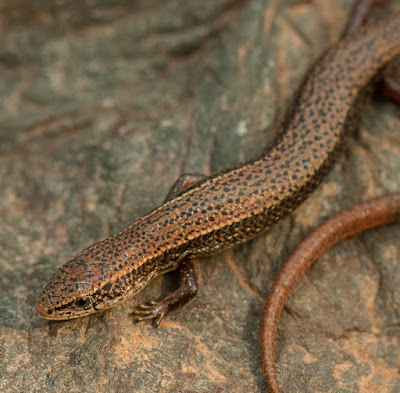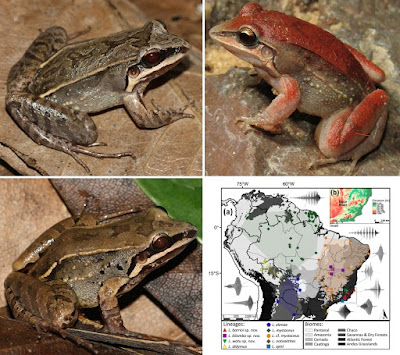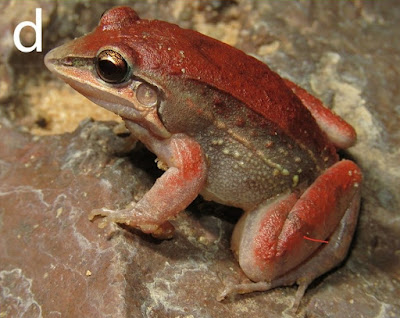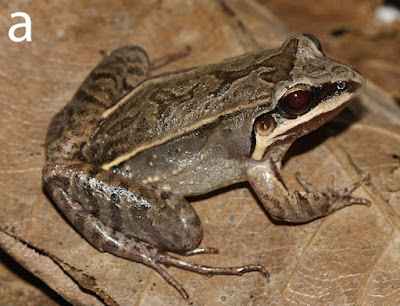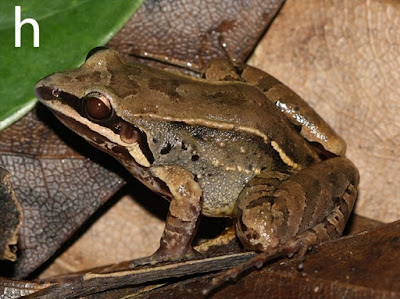[Most Recent Entries] [Calendar View]
Tuesday, May 19th, 2020
| Time | Event | ||||||||
| 10:04a | [Herpetology • 2020] Panaspis annettesabinae • A New Species of African Snake-Eyed Skink (Scincidae: Panaspis) from Ethiopia
Abstract A recent molecular phylogenetic revision of the snake-eyed skinks (genus Panaspis Cope, 1868) uncovered extensive cryptic diversity, including several new species from throughout sub-Saharan Africa. Here, we describe one of these from Ethiopia as Panaspis annettesabinae sp. nov. This description is based on a previous molecular phylogeny and morphological, scalation, and coloration data collected from the type specimen. Phylogenetic analyses place the species alone in what we term the P. annettesabinae species group from Ethiopia. This group forms the sister lineage to a large southern African radiation and suggests a potential northern origin for much of the extant diversity of Panaspis. Many new taxa have recently been discovered in the genus and region, and there are several historical records of Panaspis from elsewhere in Ethiopia. Thus, we suggest that the range of this new species (known only from a single specimen at present) may be much larger, and that additional undescribed species may exist in northern sub-Saharan Africa. Keywords: Reptilia, Ethiopia, Panaspis annettesabinae, arid faunas, scincid lizards, cryptic radiations Panaspis annettesabinae sp. nov. Etymology. The specific epithet “annettesabinae” honors Annette Sabin of the Sabin family, long-time philanthropic supporters of biodiversity conservation. We propose the English vernacular name “Sabin’s Snake-Eyed Skink.” Timothy J. Colston, R. Alexander Pyron and Aaron M. Bauer. 2020. A New Species of African Snake-Eyed Skink (Scincidae: Panaspis) from Ethiopia. Zootaxa. 4779(2); 190–200. DOI: 10.11646/zootaxa.4779.2.2 | ||||||||
| 10:47a | [Herpetology • 2020] Leptodactylus barrioi, L kilombo & L. watu • Unraveling the Species Diversity and Relationships in the Leptodactylus mystaceus Complex (Anura: Leptodactylidae), with the Description of Three New Brazilian Species
Abstract Members of the Leptodactylus mystaceus species complex are widely distributed in forests and open formations of South America east of the Andes. Species of the complex are morphologically similar or indistinguishable among each other, but acoustic data have been the cornerstone for species discrimination across their geographic ranges. In this paper, we re-examine the monophyly, species diversity, and relationships in the L. mystaceus complex on the basis of morphology, coloration, acoustics, and DNA sequences. Morphological and color patterns originally used to the allocation of species to the L. mystaceus complex are also reassessed. Our results revealed three new species from the Brazilian Atlantic Forest and Cerrado, which are named and described herein, based mainly on acoustic and molecular data. Populations assigned to the lineage widely distributed across the South American Dry Diagonal (DD), reported in this study as L. cf. mystaceus, is likely paraphyletic with respect to the nominal species (Amazonian lineage), but additional data are still needed to address the taxonomic status of the DD lineage. Keywords: Amphibia, Amazonia, Atlantic Forest, Bioacoustics, Biodiversity, Cerrado, Cryptic diversity, Dry Diagonal
Leptodactylus kilombo sp. nov. Etymology. The Kimbundu word kilombo (quilombo in Portuguese), used as a noun in apposition, literally means war camp. Quilombos are hinterland settlements founded by people of African origin including the quilombolas (inhabitants of quilombos), maroons, and some other names and variations by which these communities recognize themselves. Most of the original inhabitants were runaway slaves. There are hundreds of recognized quilombos throughout Brazil and also several out of record by the federal government. Such settlements carry plenty of historical, cultural, and anthropological history back into the Brazilian Imperial Age (colonial Brazil), especially in the mid-17th century, related to the slavery in the country. The type locality of Leptodactylus kilombo is located nearby an ancient quilombola settlement named Chapada dos Negros in Arraias, in the south of Tocantins State, north central Brazil (Gualberto 2017).
Leptodactylus barrioi sp. nov. Etymology. The epithet is a homage to Avelino Barrio, who was a pioneer in characterizing calls of Leptodactylus and Physalaemus species in two comparative studies (Barrio 1965a, b). This researcher was very attentive to the relevance of acoustic data for species discrimination in both leptodactylid genera.
Leptodactylus watu sp. nov. Etymology. The word watu, a noun in apposition, is derived from the dialect of the Borún indigenous people and is a reference to the Doce River (Costa-Reis & Genovez 2013). In 2015, the Doce River experienced the worst environmental disaster that ever took place in Brazil, the collapse of a mining tailings dam owned by Samarco (and co-owned by the Brazilian Vale and Australian BHP Billiton). The catastrophic dam failure released around 60 million cubic meters of iron ore tailings (toxic slurry) directly into the Doce River watershed, killing 20 people and affecting biodiversity across hundreds of kilometers around the river drainage, riparian lands, and the Atlantic coast, in addition to a severe contamination of the soil and water table within the affected region. The epithet is a tribute to the resistance of the Borún people and to the Watu (Doce River) in southeastern Brazil. Leandro Alves da Silva, Felipe M. Magalhães, Hans Thomassen, Felipe S.F. Leite, Adrian A. Garda, Reuber A. Brandão, Célio F. B. Haddad, Ariovaldo A. Giaretta and Thiago R. Carvalho. 2020. Unraveling the Species Diversity and Relationships in the Leptodactylus mystaceus Complex (Anura: Leptodactylidae), with the Description of Three New Brazilian Species. Zootaxa. 4779(2); 151–189. DOI: 10.11646/zootaxa.4779.2.1 |
| << Previous Day |
2020/05/19 [Calendar] |
Next Day >> |
